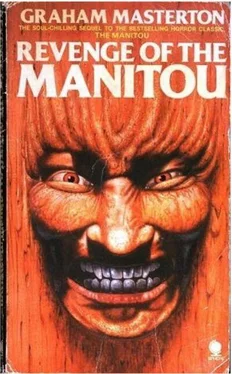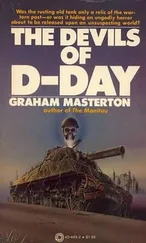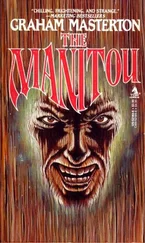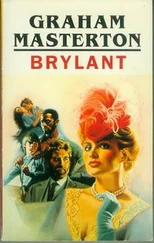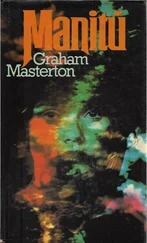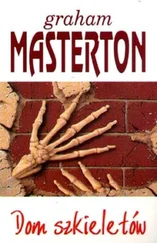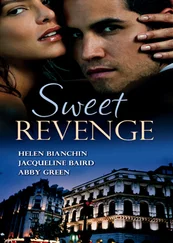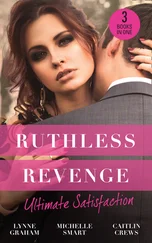Graham Masterton - Revenge of the Manitou
Здесь есть возможность читать онлайн «Graham Masterton - Revenge of the Manitou» весь текст электронной книги совершенно бесплатно (целиком полную версию без сокращений). В некоторых случаях можно слушать аудио, скачать через торрент в формате fb2 и присутствует краткое содержание. Жанр: Ужасы и Мистика, на английском языке. Описание произведения, (предисловие) а так же отзывы посетителей доступны на портале библиотеки ЛибКат.
- Название:Revenge of the Manitou
- Автор:
- Жанр:
- Год:неизвестен
- ISBN:нет данных
- Рейтинг книги:3 / 5. Голосов: 1
-
Избранное:Добавить в избранное
- Отзывы:
-
Ваша оценка:
- 60
- 1
- 2
- 3
- 4
- 5
Revenge of the Manitou: краткое содержание, описание и аннотация
Предлагаем к чтению аннотацию, описание, краткое содержание или предисловие (зависит от того, что написал сам автор книги «Revenge of the Manitou»). Если вы не нашли необходимую информацию о книге — напишите в комментариях, мы постараемся отыскать её.
Revenge of the Manitou is the follow-up to The Manitou, which once again features Harry Erskine, Singing Rock, and a host of Indian stories creating a spine-tingling sequel with some disturbingly horrific passages.
Revenge of the Manitou — читать онлайн бесплатно полную книгу (весь текст) целиком
Ниже представлен текст книги, разбитый по страницам. Система сохранения места последней прочитанной страницы, позволяет с удобством читать онлайн бесплатно книгу «Revenge of the Manitou», без необходимости каждый раз заново искать на чём Вы остановились. Поставьте закладку, и сможете в любой момент перейти на страницу, на которой закончили чтение.
Интервал:
Закладка:
I’ve been searching for ten years to see picture writing like this. Across Alaska. Down through Arizona. Everywhere. Ten years of hardship and struggle. And you’re telling me to come back in the morning?”
The girl frowned at him, sympathetic but confused. “Well, I guess you could take a quick look,” she told him. “But you’d have to pay the regular admission.”
“I’ll do it,” said Harry. “And I’ll pay for my friends, too.”
“Friends?” she queried, but he was already peeling off six dollars.
Once the girl had reluctantly handed over three tickets, Harry walked quickly back to the pickup and rapped on the window. Neil and Singing Rock had been listening to the radio news, and they hushed him for a ‘* moment. Then, when the news — was over, Singing Rock said, “They tried to get to the bus with half-a-dozen specially trained men. As far as they can tell, all six of them were struck down and killed.
They’re just lying in the road.”
Neil said, “It sounds hopeless. How the hell can we fight against something as powerful as that?”
“I think I’ve got a clue,” said Harry. “There’s a Professor Thoren working up here, translating some Indian picture writing they found on a petrified tree about two years ago. Apparently it was all in the papers when they discovered it, but I don’t remember reading it myself. Mind you-that was before I met Misquamacus. I wasn’t much interested in Indians then.”
“But Misquamacus said the writing was still hidden,” said Neil.
“What did he know?” asked Harry. “I don’t suppose they get the San Francisco Examiner in the great eut-side. And this petrified forest was only discovered around 1860, after his last reincarnation.”
“How do you know that?” asked Singing Rock.
Harry turned and pointed. “It’s painted on a sign right up on that tree over there. I thought Indians were supposed to have sharp eyes.”
Singing Rock grunted in amusement. Then he climbed out of the pickup, and the three of them walked through the turnstile, under the shade of an ancient oak, into the park itself.
To reach the Tunnel Tree, they had to walk around a sloping path, up past a hilly meadow, and along the edge of a ridge. It was silent in the forest, except for the rustling of leaves and the scurrying of squirrels, and then- footsteps sounded loud on the dry, leaf-strewn ground. Neil had brought along the flashlight from the pickup, but the woods were still dark and shadowy under the cloudy sky.
Halfway along the ridge, they came to an enormous fallen redwood, fenced off with chain link. Neil shined his torch on it, and the wood glistened and sparkled. Like all the petrified trees in the forest, it had been infiltrated with silicas from volcanic lava, which had turned it gradually into stone. The massive trunk, over four feet across and hundreds of feet long, disappeared into the rocky hillside, and beside it ran a narrow tunnel cut into the limestone and shored up with planks.
From within the tunnel, they could see lights.
“Okay,” said Harry. “I think I’d better lead the way.”
They entered the tunnel, heads bent, and walked along the boarded floor until they reached the end. There, sitting on a campstool in front of the petrified tree, with a battery of flashlights and cameras and drawing equipment, was a middle-aged man in jeans and a lumberjack shirt, peering closely at the bark through magnifying spectacles.
Harry stood beside him and waited. But the professor was so engrossed in what he was doing that he stayed where he was, his head bent, his heavy eyebrows drawn
‘together like aggressive caterpillars, his hairy hand poised to draw a line of India ink on his drawing pad.
It was clammy and warm in the tunnel, and Harry tugged at his collar.
“Excuse me,” he said. “Are you Professor Thoren?”
The professor’s body flinched. Then, very slowly, he sat back on his campstool and turned toward them. His eyes were so grossly enlarged by his magnifying lenses that Harry felt a ridiculous momentary shock. But the professor took the glasses off, and replaced them with a pair of normal eyeglasses.
“Do you have any idea of the concentration it takes to make sense of these hieroglyphs?” he said, in a deep, New England accent.
Harry grinned and shrugged, and the professor sighed, “No, you obviously wouldn’t.
But your interruption, let me assure you, has cost me two hours’ train of thought.”
Singing Rock said, “We wouldn’t have interrupted you at all, professor, but it’s desperately urgent. Many lives are at stake.”
“Urgent?” queried Professor Thoren. “How can anything to do with these hieroglyphs be urgent! They’ve been here for two thousand years, or even longer. This tree has lain here for six million years. In this sort of business, nothing is ever urgent. How can it be?”
Singing Rock said, “I can’t explain, professor, and I think if I did you would find the situation too difficult to grasp. But I must assure you that we are serious, that we are perfectly sane, and that we must know urgently what it says in that prophecy.”
Professor Thoren looked at Singing Rock carefully. “You’re an Indian, aren’t you?
This is nothing to do with Indian rights, is it? Nothing to do with that Wounded Knee business?”
“I was there, at Wounded Knee, advising and helping,” said Singing Rock. “But this particular problem has nothing to do with it whatever. This is a problem of Indian magic.”
Professor Thoren got up off his campstool and folded it away. He was a tall, broad-faced man, and he had to stoop inside the confines of the tunnel. He said, “What makes you think these hieroglyphs are a prophecy? Do you know anything about them?”
“Nothing at all,” said Singing Rock. “But they were mentioned in the context of an Indian legend.”
“Well, you surprise me,” Professor Thoren told him. “I thought I knew all the Indian legends there are to know. But nobody’s ever mentioned to me that this could be a prophecy, and I’m only just beginning to come around to believeing it could be some kind of mystical prediction myself. Either you know something I don’t know, or else you’re way ahead of me.”
“Let’s just say we have inside information,” said Harry uncomfortably. He didn’t like runnels much, they gave him claustrophobia, and he was praying that Professor Thoren would finish saying what he had to say and let them get out.
The professor looked at him quizzically. “Inside information? It sounds as if you heard it from Gitche Manitou himself.”
“Not quite,” said Harry. “But near enough. You know how these manitous gossip.”
Neil said, “Professor Thoren, I have an eight-year-old son. He’s in terrible danger right now, and these men are trying to save his life. If you could see your way clear to cooperating with them-well, I’d appreciate it.”
Professor Thoren looked at their faces in the lamplight. Then he said, “I suppose I’ve heard of nuttier things. What do you want to know?”
Harry pointed to the hieroglyphs scratched on the rock-hard surface of the giant redwood. “Do you know, basically, what all of this means?” he asked the professor.
The professor ran his fingers over the lines of hieroglyphic script. There were triangles, curves, figures that looked like birds, circles, and dots. He said, “Basically, I suppose I do. I’ve translated it into literal English. The hieroglyphs are remarkably close to the inscriptions found on ancient stones in New England and middle America. I don’t know who carved them, or why, or even how, because this petrified tree is as hard as anything you’ll ever find. But it must have been an important message, because somebody took a lot of trouble to make sure it was preserved. It could have been here for two thousand years, or maybe a hell of a lot longer. It comes right out of the ancient past, right out of a time when this land was Indian country, all the way from the east coast to the west.”
Читать дальшеИнтервал:
Закладка:
Похожие книги на «Revenge of the Manitou»
Представляем Вашему вниманию похожие книги на «Revenge of the Manitou» списком для выбора. Мы отобрали схожую по названию и смыслу литературу в надежде предоставить читателям больше вариантов отыскать новые, интересные, ещё непрочитанные произведения.
Обсуждение, отзывы о книге «Revenge of the Manitou» и просто собственные мнения читателей. Оставьте ваши комментарии, напишите, что Вы думаете о произведении, его смысле или главных героях. Укажите что конкретно понравилось, а что нет, и почему Вы так считаете.
